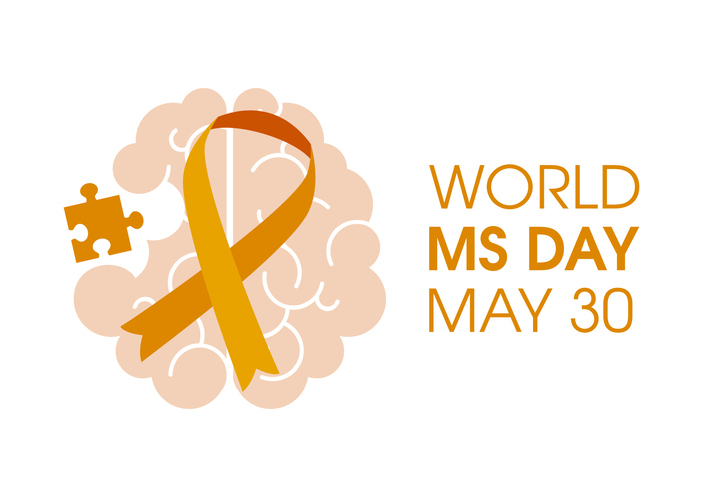- New report calls for faster MS diagnosis in Australia on World MS Day 30 MAY 2024: A new report has revealed the prolonged time to diagnose multiple sclerosis (MS) and highlighted the urgent need for increased investment in MS research and enhanced awareness of the disease. The ‘My Diagnosis’ report produced by MS Australia and released on World MS Day has revealed the average time from onset of symptoms to an MS diagnosis extends nearly four years. The report draws on data from the Australian MS Longitudinal Study (AMSLS), a survey-based research study established in 2002 that collects patient-reported outcomes from 2500 people living with MS. A review of that data by the Menzies Institute for Medical Research at the University of Tasmania examines trends in MS diagnosis over the past 25 years. Since the introduction of the first disease-modifying therapies (DMT) for MS treatment in 1996, the average time to diagnosis has reduced from five years and almost four months in 1997-2000 to three years and almost 11 months in 2017-21. While this reduction in diagnosis times is good news at a population level, there are still many people who experience a very long time to diagnosis.
To improve MS diagnosis time, the report details three key areas that need to be addressed:Improved funding for research to help identify methods for earlier detection and intervention of MS.
Better education and awareness of MS among healthcare professionals.
Better community understanding of early MS symptoms.
Dr Julia Morahan, Head of Research at MS Australia, says delays in receiving an MS diagnosis is critical lost time for people living with the condition, which can result in irreversible damage and profound mental distress.
“In MS, time is brain. We know that the longer it takes to get a diagnosis of MS, the greater the risk of damage occurring and disability accumulating, which can ultimately diminish a person’s quality of life,” Dr Morahan said.
Being able to accurately diagnose and halt MS at an earlier stage has enormous potential to significantly reduce the burden of the disease on people’s quality of life and the economy. More than 33,000 Australians are now living with MS, which is the most commonly acquired chronic neurological disease affecting young adults. Concerningly, the number of people diagnosed with MS has been increasing at an accelerating rate. Associate Professor Vilija Jokubaitis from Monash University’s Department of Neuroscience is confident that breakthroughs in earlier diagnosis are possible with better resourcing, the establishment of MS biobanks and more financial support for research in MS.
“Greater research investment will support efforts to uncover more accurate biomarkers that are specific to MS. These biomarkers might be in the blood or cerebral spinal fluid or imaging biomarkers that have a very specific signal that can differentiate MS from other neurological conditions,” Associate Professor Jokubaitis said.
Associate Professor Jokubaitis says an improved understanding of MS among healthcare professionals through targeted awareness campaigns would also ensure symptoms are recognised and acted upon earlier.
“Given MS affects about one in seven hundred Australians, many GPs are unlikely to see people with MS depending on where they practice. So if a person comes to them with those symptoms, it may not be the first thing they think of if the awareness isn’t there.”
MS symptoms may include severe pain, walking difficulties, debilitating fatigue, partial blindness and cognitive issues. Not knowing the cause of one’s symptoms can cause immense distress and anxiety for the person affected with MS. Together with quantitative data from the AMSLS, the ‘My Diagnosis’ Report captures a number of lived experience diagnosis case studies. Laura Birchall shared her experience of her first MS symptoms and the impact of waiting for a diagnosis.
“Waiting for a diagnosis had an enormous impact on me emotionally, my ability to focus and my ability to work,” Ms Birchall said.
Ms Birchall believes she had years’ worth of MS symptoms that she dismissed at the time because she felt they could be explained by something else, and encourages others in a similar situation to have a conversation with their doctor.
“I think if something feels a little bit off, even if it’s not stopping you from doing your day-to-day activities. If there’s been a change, if something doesn’t feel right, talk to people in your life about it, and listen to them when they tell you to go to the doctor,” Ms Birchall said.
The report’s findings were released on World MS Day, a day that presents a unique opportunity for the global MS community to come together to discuss MS diagnosis and seek solutions. MS Australia CEO Rohan Greenland says the report’s findings demand action to reduce MS diagnosis times and has called on the government, healthcare professionals, and the public to take heed of the findings.
“Investing in MS research and building greater awareness among GPs and the general public of the condition will propel us towards a future where MS is detected earlier, and a future where its impact is significantly mitigated,” Mr Greenland said.







